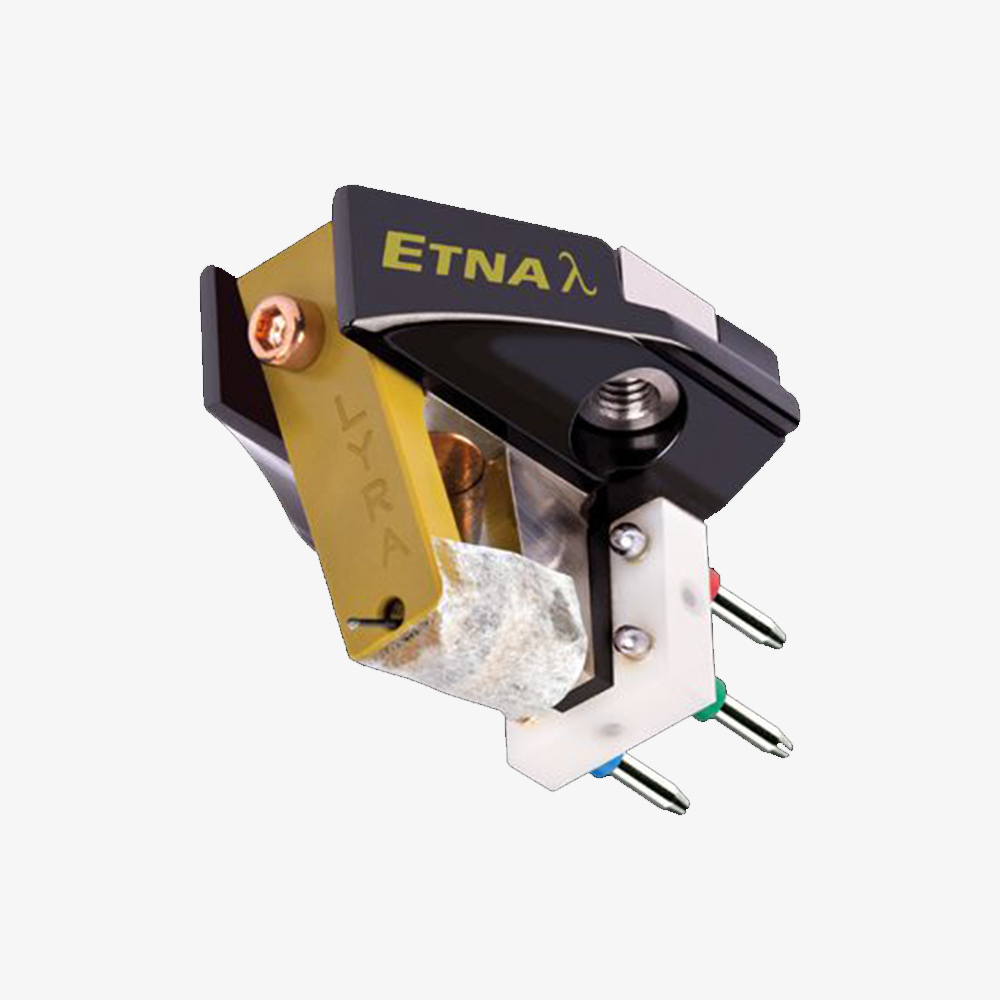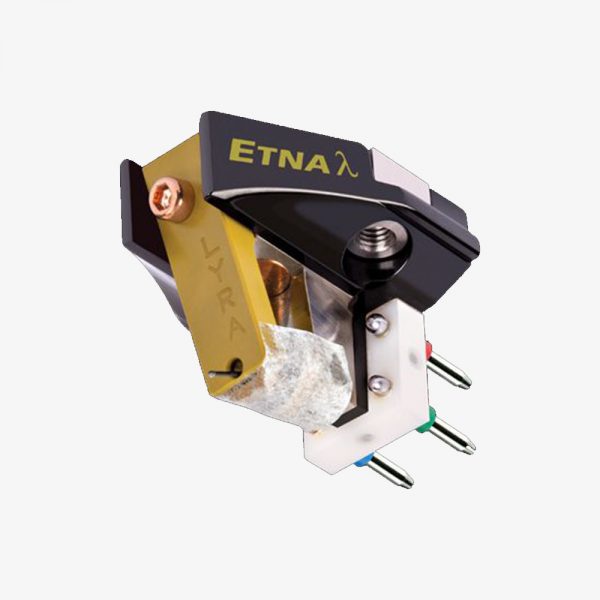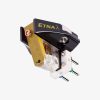Etna λ Lambda Moving Coil Cartridge
Etna employs a solid titanium core structure machined with non-parallel surfaces to inhibit internal reflections wherever possible, but unlike Atlas (and Titan i before it), this is mated to a slightly undersized, asymmetric duralumin outer body that is designed to lock over the core like a very tightly-fitting jigsaw puzzle.
1 Year |
Description
The core and body are augmented with bronze and stainless-steel resonance control rods, then everything is pressure-fit together into a pre-stressed, solid, void-free structure which is comprised of multiple materials and complex internal shapes. The constrained-layer nature of this construction dramatically reduces the resonant signature of each material and creates a far more neutral-sounding body structure than otherwise possible, while the high body stiffness benefits transients, dynamics and resolution.
Linear transducers such as loudspeakers and phono cartridges are inherently inefficient devices – on the order of 5 to 10%. In other words, of the vibrational energy that enters a cartridge from the LP groove, only 5 to 10% will be converted into electrical signal. The cartridge’s internal damping system will dissipate some of the remaining 90 to 95%, but much of the excess vibrational energy will reflect inside the cartridge, creating internal echoes, smearing, and a general diminishing of fidelity. It is easy to demonstrate this with many cartridges – play a highly modulated LP with the power amp turned off, and bring your ear close to the cartridge. The “needle-talk” that you hear is excess vibrational energy which isn’t being controlled properly.
To help conduct this excess vibrational energy into the headshell, where it can be safely dissipated within the greater mass of the tonearm and turntable plinth, Lyra has traditionally mounted the cantilever directly into the cartridge body, resulting in a rigid, seamless connection between the cantilever assembly and tonearm headshell (as it happens, we remain the only manufacturer to do so).
To help conduct this excess vibrational energy into the headshell, where it can be safely dissipated within the greater mass of the tonearm and turntable plinth, Lyra has traditionally mounted the cantilever directly into the cartridge body, resulting in a rigid, seamless connection between the cantilever assembly and tonearm headshell (as it happens, we remain the only manufacturer to do so).
In the process of designing Atlas, Lyra discovered that in addition to coupling the cantilever to headshell with a rigid, unbroken path, further sonic gains could be realised by removing all objects and voids from the path. Atlas’ asymmetric shape was conceived partly for this purpose, to move the front magnet carrier, mounting screw and screwhole out of the way of the mechanical path connecting cantilever to headshell.
Etna utilizes the same asymmetrical concept, but whereas Atlas offsets the screw and screwhole to one side, Etna moves the screw / screwhole all the way to the front of the cartridge – and interposes an additional bronze damping barrier between the screw / screwhole and the mechanical path linking cantilever to headshell.
Product Specifications
Type
Medium weight, medium compliance, low-impedance moving coil cartridge
Stylus
Lyra-designed long-footprint variable-radius line-contact nude diamond (3μm×70μm), slot-mounted
Cantilever system
Diamond-coated solid boron rod with short one-point wire suspension, directly mounted into cartridge body via high-pressure knife-edge system
Body
Machined titanium central core, anodized aluminium
Coils
2-layer deep, 6 N high-purity copper, chemically-purified high-purity iron cross-shaped former, 4.2 ohm self-impedance, 11μH inductance
Output voltage
0.56 mV@5 cm/sec., zero to peak, 45 degrees (CBS test record, other test records may alter results)
Frequency range
10 Hz~50 kHz
Channel separation
Greater than 30dB at 1kHz
Compliance
Approx. 12×10 cm/dyne at 100 Hz
Cartridge mounting screws
2.6 mm 0.45 pitch JIS standard
Cartridge weight (without stylus cover)
9.2g
Distance from mounting holes to stylus tip
9.5 mm
Recommended tracking force
1.62 – 1.72g
Recommended load directly into MC phono input
Detailed guidelines in instruction manual, finalise by listening
Recommended load via step-up transformer
Use a step-up transformer designed for 3 -6 ohms cartridge impedance (step-up transformer’s output must be connected to 10kohm ~ 47kohm MM-level RIAA input, preferably via short, low-capacitance cable)
Recommended tonearms
Medium to Medium-High mass arms recommended, which is bulk of tonearm market



